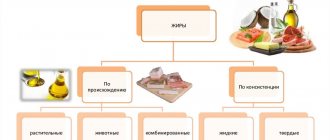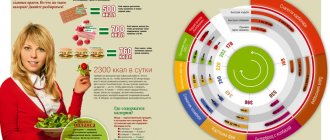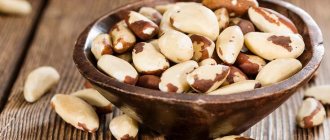Vegetables
Potatoes, yams, green peas and carrots are fast carb vegetables that provide faster energy. Potatoes are a quickly digestible food. But when you eat potatoes with protein or fatty foods, the process of digesting potatoes slows down. So if you are training multiple times then don't take it with protein or fat because at that time you need quick energy. Sweet potatoes are also a quick carbohydrate that contains a lot of fiber. Surprisingly, fiber cannot be converted into calories.
Green peas are full of carbohydrates. It also contains starch and fiber. Carrots are also rich in alpha, beta carotene and fiber. They act as an anti-aging drug in the body.
Table of carbohydrate content in vegetables
| Name | Carbohydrates per 100 grams |
| Iceberg lettuce | 2,9 |
| Arugula | 3,6 |
| Chard | 3,7 |
| Radicchio | 4,48 |
| White cabbage | 7,4 |
| Chinese cabbage | 3.2 g |
| Petiole celery | 3,6 |
| Sauerkraut | 3,0 |
| Pickles | 1,4 |
Vegetables, like fruits, play an important role in a low-carb diet. Make the diet more varied and nutrition nutritious.
The list of low-carb vegetables you can include in your diet is extensive.
In addition to being low in carbohydrates and calories, they can reduce the risk of certain diseases and improve health.
Advantages of fast carbohydrates
Fast carbs have some positive benefits, despite being considered a less healthy option due to their increased blood sugar levels. They are useful for bodybuilders or other athletes who need a quick source of energy after hard workouts. Without energy replenishment after an intense workout, the body begins to break down muscle protein to convert it into energy. Fast carbohydrates can prevent muscle loss and improve athletic performance.
Simple carbohydrates - what are these foods?
This is primarily food with a high glycemic index (over 70). This indicator indicates the rate of absorption of the product. Nutritionists advise eating foods with a high GI value within half an hour after a grueling workout in the gym. It is during this period that the body begins to recover. Give preference to honey, pasta or sweet fruits.
It is not advisable to give up fruits and berries. Most products in this group contain a lot of non-digestible carbohydrates (fiber). In addition to glucose and fructose, fruits contain many other beneficial microelements.
Content of fast carbohydrates in food, table for weight loss
| Bread, cereals and pasta | Serving Size | Carbohydrates (g) |
| Bread | 1 slice | 10-20 |
| Corn bread | 1 slice | 30 |
| Corn flour (dry) | 2 tbsp. | 12 |
| Semolina porridge cooked in water | ½ cup | 15 |
| Toast | ½ cup | 12 |
| all-purpose flour | 2 tbsp. | 12 |
| Oat flakes cooked in water | ½ cup | 12-15 |
| Cooked pasta | 1 glass | 45 |
| Pita | 10cm | 30-45 |
| Cooked rice | 1 glass | 45 |
| Corn tortilla | 20cm | 12 |
| Wheat flatbread | 20cm | 15 |
| 2. Nuts and legumes | Serving Size | Carbohydrates (g) |
| Beans and lentils, cooked | ½ cup | 18-22 |
| Hummus | ½ cup | 15-20 |
| Nuts | ½ cup | 15 |
| 3. Starchy vegetables | Serving Size | Carbohydrates (g) |
| Corn on the cob | 20-25 cm. | 20-30 |
| Corn, boiled or canned | ½ cup | 15 |
| Peas | ½ cup | 12 |
| Baked potatoes | average | 40 |
| Mashed potatoes | ½ cup | 15-20 |
| Sweet Potato/Yam | average | 25 |
| 4. Milk and yoghurts | Serving Size | Carbohydrates (g) |
| Almond milk | 1 glass | 1 |
| Cow's milk | 1 glass | 12 |
| Soy milk | 1 glass | 3 |
| Plain yogurt | 1 glass | 14 |
| 5. Fruit | Serving Size | Carbohydrates (g) |
| Apple | average | 15-30 |
| Applesauce | ½ cup | 15 |
| Dried apricots | 7 pieces | 15 |
| Banana | 20-25 cm | 30-45 |
| Blackberries, blueberries | 1 glass | 20 |
| Cherry | 12 | 15 |
| Dried dates | 5-6 pieces | 30 |
| Fruit cocktail | ½ cup | 15 |
| Grapefruit | half | 15 |
| Grape | 15 | 15 |
| Kiwi | small | 15 |
| Mango | ½ cup | 15 |
| Melon | 1 glass | 15 |
| Orange | average | 15 |
| Canned peaches | ½ cup | 15 |
| Pear | 150 g. | 20 |
| A pineapple | 1 glass | 20 |
| Plum | 1 plum | 10 |
| Dried prunes | 3 | 15 |
| Raisin | 2 tbsp. | 15 |
| Raspberries | 1 glass | 15 |
| Strawberry | ½ cup | 15 |
| Watermelon | 1 glass | 12 |
| 6. Snacks | Serving Size | Carbohydrates (g) |
| French fries | small package | 30 |
| Popcorn | 3 glasses | 15 |
| Chips | 30g. | 15 |
| 7. Sauces and seasonings | Serving Size | Carbohydrates (g) |
| Fruit jam | 1 tbsp. | 15 |
| Honey | 1 tbsp. | 15 |
| Ketchup | ¼ cup | 15 |
| Low fat mayonnaise | 2 tbsp. | 5 |
| Peanut butter | 2 tbsp. | 6 |
| Barbecue sauce | 2 tbsp. | 15 |
| Sweet and sour sauce | 2-3 tbsp. | 15 |
Fast carbohydrates food table + GI
Fast carbohydrates food table
| Fast carbohydrates | Glycemic index |
| Grapefruit | 20 |
| Apple | 30 |
| Coconut flour | 35 |
| Whole grain bread | 45 |
| Persimmon | 50 |
| Bananas | 65 |
| Boiled potatoes | 65 |
| Canned corn | 65 |
| Melon | 65 |
| Ice cream | 70 |
| White sugar | 70 |
| Milk chocolate | 70 |
| Pasta from soft wheat varieties | 70 |
| Muesli | 80 |
| Mashed potatoes | 80 |
| Cornflakes | 85 |
| White bread | 85 |
| Wheat flour | 90 |
| Rice noodles | 95 |
| French fries | 95 |
| Cakes, pastries | 100 |
| Dates | 146 |
Fast carbohydrates: to eat or not?
The more active a person’s lifestyle, the more intense physical activity, the more sugars the body requires. But even those who are not athletes or loaders should not completely exclude sweet substances from their diet. They provide the body with more than just calories. The function of simple carbohydrates in a cell is that they act as their structural elements; without these compounds, muscles, liver, and heart will not be able to function normally.
A chronic lack of glucose is no less dangerous than an excess. Without replenishing this substance, a person will be lethargic, drowsy, and the brain, the main consumer of energy, begins to suffer.

In extreme cases, this can lead to mental disorders and even coma. In addition, there are cases when glucose helps improve well-being:
- after operations and serious illnesses;
- in case of dehydration, intoxication;
- after vomiting, diarrhea;
- to support liver and heart activity.
Nature also designed it so that sweet fruits and juices from them contain essential vitamins, minerals, fiber, and honey is a concentrate of unique substances important for health. No matter how strange it may sound, there are healthy carbohydrates and even healthy fats that are necessary for the human body.
Norm and excess
During the day, the human body should receive about 400 g of carbohydrates, mostly slow ones.
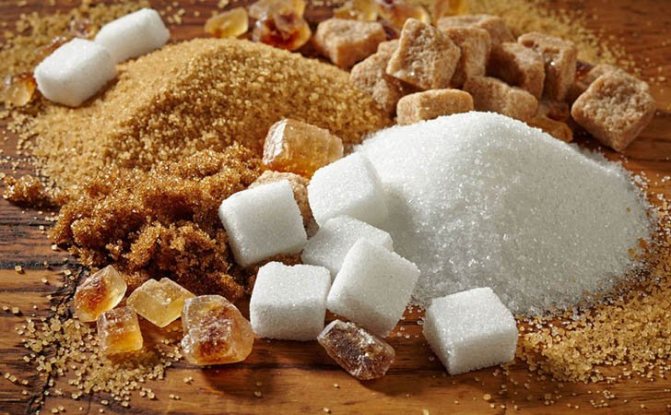
The norm for sugar consumption is no more than 50 g per day. It's not as much as it seems. 1 level teaspoon is 5 g, which means the daily norm is 5 cups of sweet tea or coffee, which are easy to drink during the working day. But the norm implies not only pure sugar, visible, but also all its hidden doses in sweets and cookies, buns and compotes, cakes, lollipops, etc. Therefore, it is very easy to overdose on sweet substances.
There are food products whose GI is higher than 100. For example, regular sugar is characterized by a GI of 110. Many people’s favorite muesli with sugar based on corn flakes has a GI of about 130, pure boiled rice or potatoes have a GI close to 110.
To prevent the development of many diseases and prevent deterioration of well-being, it is necessary to lead a healthy lifestyle with a balanced diet and sufficient physical activity. In this case, the amount of calories received from food will be completely spent on the needs of the body.
Why are simple carbohydrates dangerous?
Most of them have a pronounced sweetish taste. All carbohydrates from this group are divided into two subtypes - monosaccharides and disaccharides.
Monosaccharides - consist of only one molecule. There are three types of monosaccharides:
- Glucose - when it enters the body, it is instantly converted into glycogen and accumulates in the liver and muscles, after which it is slowly consumed by the body. This monosaccharide is found in grapes, carrots, sweet berries, and corn.
- Fructose is processed by the body a little more slowly; first, the monosaccharide takes the form of glucose, which is why fructose is considered less harmful compared to other monosaccharides. Fructose is found in natural honey, vegetables and ripe fruits.
- Galactose is a type of saccharide found in dairy products.
Disaccharides are simple carbohydrates consisting of two molecules. These include:
- Lactose is the so-called “milk sugar” found in natural milk. In the presence of appropriate enzymes in the body, lactose breaks down into glucose and galactose. Otherwise, dairy products are not absorbed by the body, which leads to bloating, diarrhea and other reactions.
- Maltose has the second name “malt sugar”, since the synthesis of the substance occurs mainly in sprouted grains of barley, rye, etc. The disaccharide is also released during the fermentation of grapes and the preparation of malt.
- Sucrose is the same beet sugar that we are all accustomed to. Sucrose is found in lower concentrations in cane and brown sugar, and an even smaller percentage is found in fruits and vegetables.
All of these types of sugars are absorbed by the body in slightly different ways, but when consumed regularly, they have the same harmful effect. Whether foods belong to simple carbohydrates determines the glycemic index value.
Why do you need to know the glycemic index?

Most sugars enter the body in hidden form. This is not just granulated sugar that is added to tea or coffee. But also all fruits, baked goods, sweets. Until the age of 20, the body still copes with the excess intake of fast carbohydrates into the body, and then diabetes gradually develops.
Eating foods with a low glycemic index helps:
- prevent the development of diabetes or control sugar levels during illness, preventing worsening of the condition and attacks;
- get rid of excess weight, maintain optimal body weight;
- take care of the health of the heart and blood vessels;
- fight acne and skin rashes;
- provide the necessary sports performance;
- in the treatment of polycystic ovary syndrome and the prevention of breast cancer.
Products with a lot of sugar are primarily dangerous due to their high calorie content. At the same time, they do not give a feeling of fullness; a person eats large portions of such foods and eats more often.
This causes spikes in glucose levels, which increases the load on the pancreas, which is responsible for producing insulin.
Fitness in the center of Odintsovo
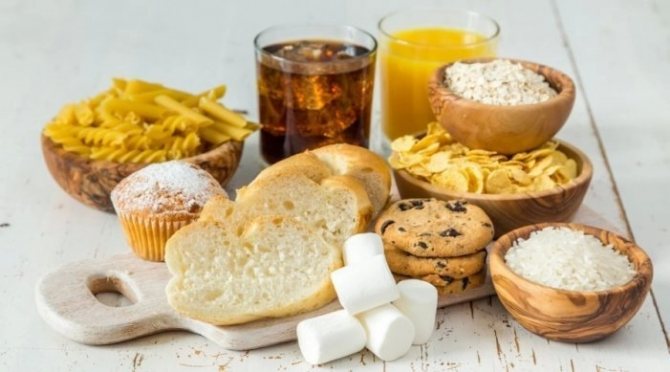
Carbohydrates occupy a very important place in nutrition. They are a source of energy. Carbohydrates are necessary for the brain to function, as well as for muscles to maintain intense activity. It is important to understand how they work in our bodies in order to manage energy and lose fat on a high carbohydrate diet.
There are two types of carbohydrates - simple (fast) and complex (slow). Both types are necessary for the body.

Simple carbohydrates are sources of “fast” energy; they can be easily obtained from a glass of juice or fruit. Their main feature is the ability to sharply increase the glucose level in the blood. As a result of this, a powerful surge of insulin occurs, the hormone responsible for neutralizing excess glucose in the blood to prevent it from “thickening.” Insulin is responsible for quickly delivering glucose to the cells that need it.
There is a limit to glucose absorption. Its excess is processed into triglycerides, the main material of adipose tissue. Simple carbohydrates are easily digestible and in the absence of proper sports activity, the muscles practically do not need them, and almost all the glucose turns into subcutaneous fat.
This does not mean that you need to give up simple carbohydrates. They should be consumed 30-40 minutes after training. At this time, muscles need energy obtained from glucose.
Complex carbohydrates take longer to digest and help maintain stable energy levels. They do not cause jumps in the increase in glucose, due to which the body has time to process it. The main sources of complex carbohydrates are cereals, vegetables, and legumes.
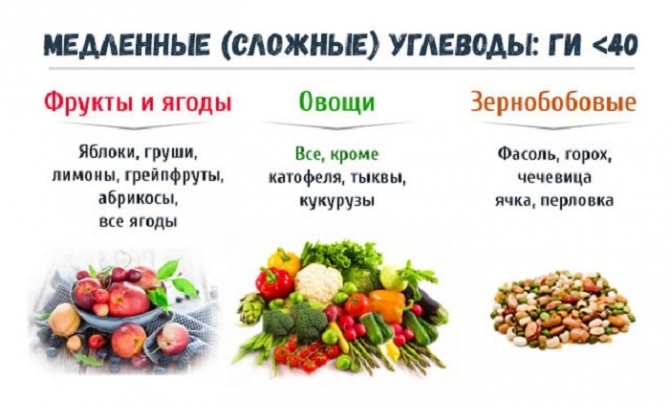
Fiber (dietary fiber) is part of slow carbohydrates, which has a very complex structure and is not digested by our body. Fiber must be present in the diet, as it helps with the functioning of the digestive system and removes toxins from the body. Fiber is found in legumes, cereals, brown rice, and bran.
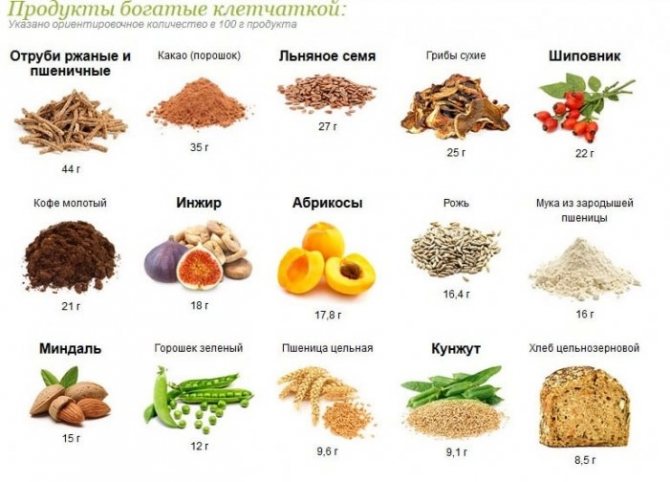
Modern man receives most of his carbohydrates in the form of sucrose, which is found in prepared foods, sweet drinks, and confectionery. But so that carbohydrates are not stored as fat, but rather provide energy to the body, the share of simple carbohydrates in the diet should not exceed 20-25%.
With a basic understanding of carbohydrates, you can reap all their benefits. Give preference to complex carbohydrates and fiber-rich foods.
Trust your health to professionals and always stay in shape!
Your Silver Gym
8

